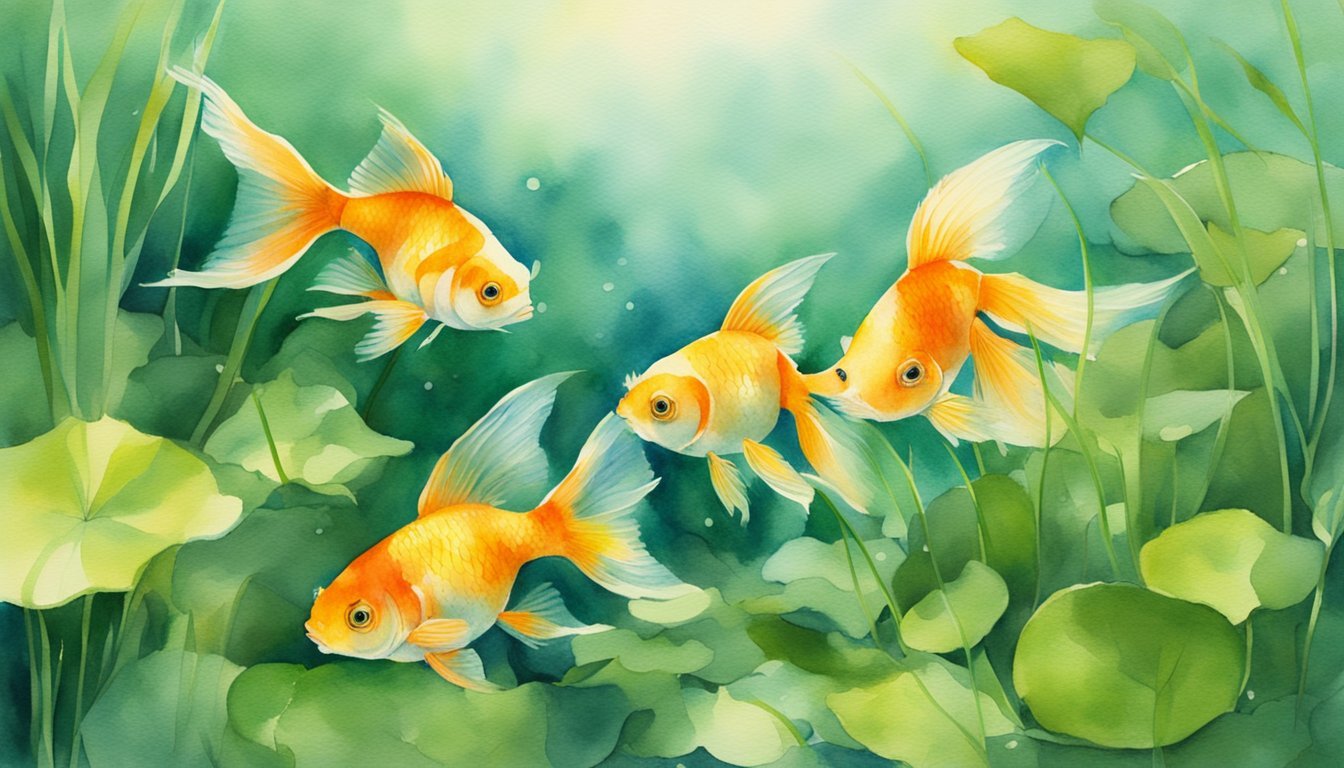Understanding Released Goldfish
Goldfish, while often seen as simple pets, can transform into significant environmental threats when released into wild waterways. They become invasive species, disrupting local ecosystems and challenging water management efforts.
Goldfish as Invasive Species
Goldfish (Carassius auratus) are a type of freshwater fish that are related to the common carp. Known for their vibrant colors and often kept in aquariums, goldfish can grow significantly larger in the wild. Without natural predators, released pet goldfish become feral and adopt voracious appetites, feeding on a variety of aquatic plants and small creatures. They have been identified as a problematic invasive species by wildlife officials and aquatic research biologists because of their ability to thrive in different water temperatures and conditions.
Impacts on Local Ecosystems
Once established in a new habitat, goldfish can severely impact local ecosystems. They are known for uprooting plants, which can lead to increased sediment in waterways and worsening water quality. Their activities can result in poor water conditions that support harmful algal blooms, decreasing oxygen levels vital for native marine wildlife. Additionally, goldfish are capable of spreading parasites and diseases to native fish populations. Their presence in non-native waters can be challenging for native species that struggle to compete for food and habitat, ultimately affecting economically valuable ecosystems and leading to costly management and culling efforts.
Case Studies and Management Strategies

This section examines diverse case studies involving released goldfish and the management strategies that have been employed to address the challenges they pose to different ecosystems.
Local and Global Case Studies
Case studies across the globe, from Asia to the United States, have documented the invasive impact of goldfish in the wild. In Burnsville and Carver County, Minnesota, goldfish have reached monstrous proportions, disrupting local lakes and ponds. Officials in Minnesota utilized nets to remove thousands of goldfish from local waterways, as reported by the Minnesota Department of Natural Resources. Meanwhile, Lake Tahoe, a jewel of the United States, has also faced the infiltration of goldfish, which can uproot plants and disturb the lake’s clarity. Beyond North America, countries like Australia have spotted goldfish in their public waters, leading to similar ecological consequences.
Preventive Measures and Removal Efforts
Preventive measures and removal efforts have become a cornerstone of addressing the goldfish issue. Consulting firms, alongside fisheries and wildlife departments, such as the Washington State Department of Fish and Wildlife, are advocating for public education to prevent goldfish releases. Nets and electrofishing are among the tools used for removal. The Canadian city of Hamilton has engaged in proactive measures at Hamilton Harbour and Lake Ontario, as referenced by Fisheries and Oceans Canada. Similarly, the Journal of Great Lakes Research outlines efforts to manage these populations and prevent further spread in the Great Lakes region. Effective strategies often involve collaboration between local authorities and engaged angler communities, who can act as first responders to any sightings of invasive species.

